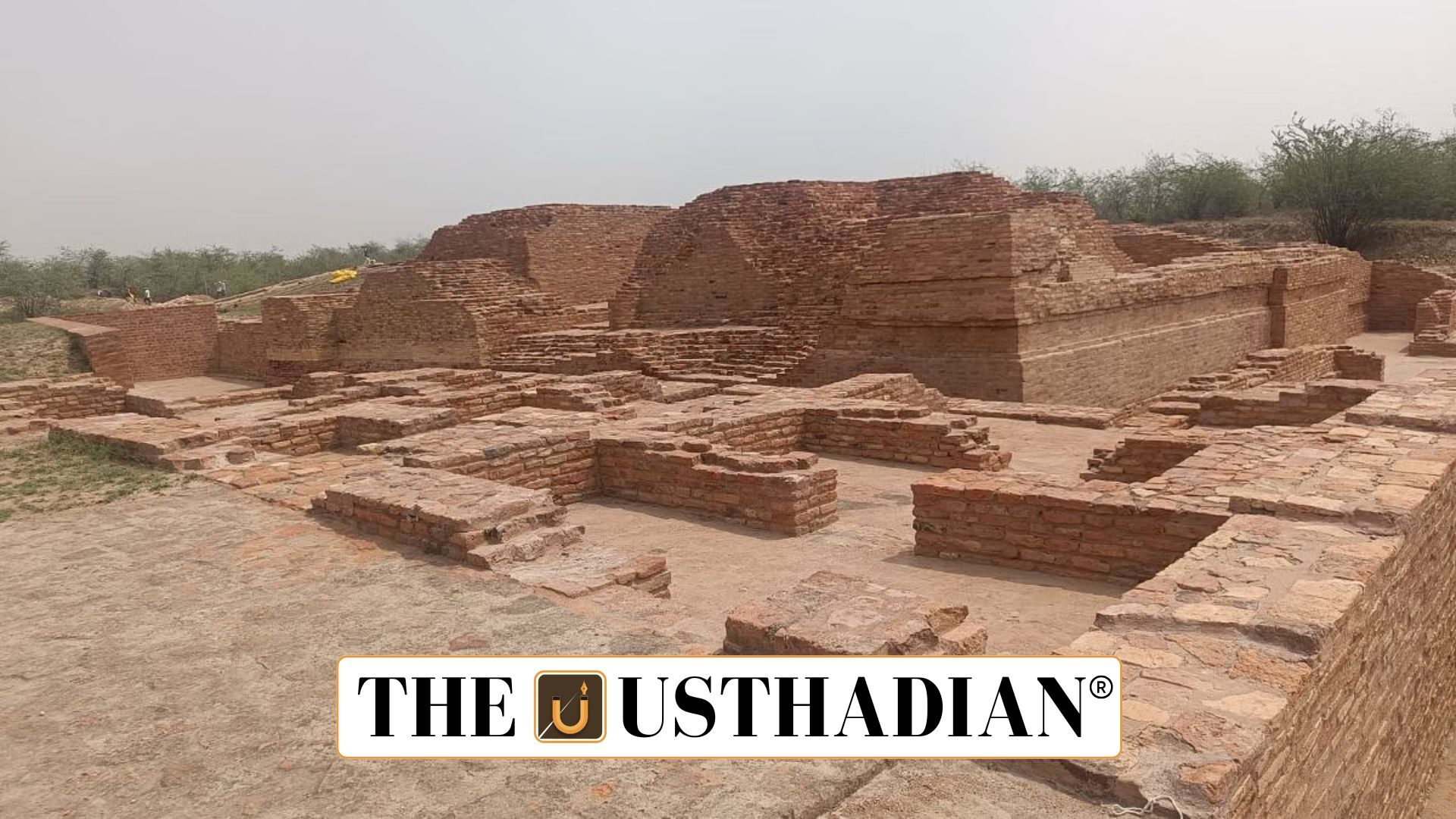IIT Kanpur reveals ancient stupas
Ancient Sites Unearthed with GPR in Haryana: A research team from IIT Kanpur has successfully detected ancient Buddhist stupas and underground structures using Ground Penetrating Radar (GPR) in Haryana’s Yamuna Nagar district.
This development adds a significant chapter to India’s archaeological mapping and the use of modern geophysical technology in heritage studies.
What is Ground Penetrating Radar
GPR is a non-invasive geophysical technique that uses high-frequency electromagnetic (EM) waves to explore underground features.
The waves are emitted into the ground, and their reflections from subsurface materials help detect structures or objects. These reflections change depending on the type of material such as soil, rock, water, or buried artifacts.
Technical working of GPR
When EM waves hit a boundary between different materials underground, part of the wave reflects back. This allows scientists to map hidden features like:
- Depth to bedrock or water table
- Buried stream channels
- Soil layers and cavities
- Archaeological remains
Static GK fact: GPR is widely used in civil engineering, geology, and forensic investigations around the world.
Limitations and range
The typical penetration depth of GPR is limited to about 10 meters, depending on the soil conductivity. In highly conductive soils, the depth may be reduced significantly.
Despite this, it remains a preferred method for high-resolution subsurface imaging, especially in dry or sandy environments.
Significance of the Yamuna Nagar finding
The findings in Yamuna Nagar validate the presence of ancient Buddhist settlements. Historical records suggest that parts of Haryana were once active in the spread of Buddhism during the Mauryan period.
The application of GPR in this region proves valuable for non-destructive archaeological exploration.
Static GK tip: India has over 1,800 protected monuments under the Archaeological Survey of India (ASI), and many remain unexplored beneath the surface.
GPR in India’s archaeological future
This success showcases how Indian scientific institutions are blending technology with history. GPR surveys can assist in planning excavations more efficiently and prevent unnecessary damage to sensitive sites.
It also opens new avenues for mapping urban underground utilities, pipeline corridors, and disaster-prone zones.
Static Usthadian Current Affairs Table
Ancient Sites Unearthed with GPR in Haryana:
| Topic | Detail |
| Institution involved | IIT Kanpur |
| Technology used | Ground Penetrating Radar (GPR) |
| Discovery location | Yamuna Nagar, Haryana |
| Purpose of GPR | Detecting buried structures and features |
| GPR wave type | High-frequency electromagnetic waves |
| Typical GPR depth range | Up to 10 meters |
| GPR sensitivity | Varies based on subsurface materials |
| Historical connection | Buddhist stupas possibly from Mauryan period |
| Broader use of GPR | Archaeology, geology, civil engineering |
| National heritage agency | Archaeological Survey of India (ASI) |








